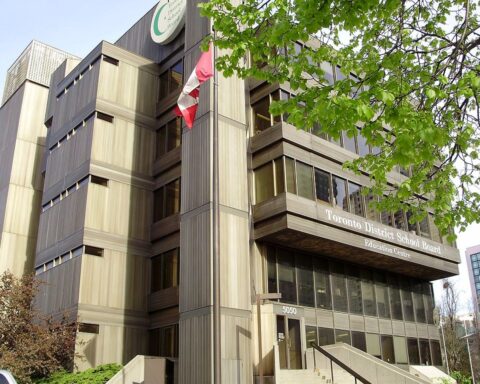Former Quebec premier Jacques Parizeau notoriously blamed the separatists’ defeat in the 1995 Quebec referendum on money and the ethnic vote.
When it comes to money, the Harper Conservatives have a distinct advantage over their two main rivals: Thomas Mulcair’s New Democrats and Justin Trudeau’s Liberals.
But when it comes to the so-called “ethnic vote” (by no means as monolithic as Mr. Parizeau might have imagined 20 years ago), all parties have a shot. No party has a monopoly on immigrants, new or long-settled, and none can take for granted the support of any ethnocultural or religious minority group.
Remarkably, the immigrants who were elected to Canada’s parliament in 2011 had not only become citizens, gotten themselves nominated, and then won election—but they represented all five main political parties and included many visible minorities.
Diverse MPs
In the 2011 federal election, voters sent 42 foreign-born citizens to represent them as MPs in Ottawa. That’s about 13 per cent of the then-308-member House of Commons.
That proportion falls short of parity with our foreign-born population (20% of us are foreign-born), but it comes quite close to matching the proportion of us who are foreign-born and Canadian citizens: 16 per cent.
Moreover, 40 per cent of foreign-born MPs are women, much higher than the 25 per cent of all MPs who are women.
Shifting from the foreign-born to visible minorities (i.e., non-white and non-Aboriginal Canadians) in Parliament, we see weaker representation. Thirty MPs were visible minorities (9.4 per cent), compared to the 15 per cent who are visible minority and Canadian citizens.
When we look at regions of origin, we find that Canada’s foreign-born MPs came from everywhere: 15 from Europe, 11 from Asia, 11 from the Americas, and five from Africa.
Diverse parties
Remarkably, the immigrants who were elected to Canada’s parliament in 2011 had not only become citizens, gotten themselves nominated, and then won election—but they represented all five main political parties and included many visible minorities: 18 Conservatives (15 visible minorities, of 166 elected), 18 New Democrats (12 visible minorities, of 103), four Liberals (2 visible minorities, of 34), and one each in the Bloc (1 visible minority, of 4) and the Green Party (no visible minority).
The Green Party is 100 per cent foreign-born: Elizabeth May is from Hartford, CT.
Another “only in Canada” fact is that our most right-wing party, the Conservative Party of Canada, attracts a substantial contingent of candidates born abroad.
The Bloc is dedicated to dismantling the country, but managed to be inclusive of the foreign-born and visible minorities. Only in Canada!
With respect to visible minorities (defined in the U.S. as non-white races and Hispanic), the U.S. has worse representation than Canada: 20 per cent in the House of Representatives compared to their population share of 37 per cent, only six per cent in the Senate), the vast majority of these are American-born visible minorities, mainly African Americans and Hispanic/Latinos, not immigrants.
Only 16 foreign-born members sit in either of the two houses. But many of these were born abroad to American parents, the most famous being John McCain and Canada’s Ted Cruz.
But even if we include all of these legislators as foreign born, they are still less than three per cent of Congress, where demographic parity would suggest that almost 70 foreign-born “should be” in both houses (to match the 13 per cent of “legal” Americans who are foreign-born).
Another “only in Canada” fact is that our most right-wing party, the Conservative Party of Canada, attracts a substantial contingent of candidates born abroad. In most countries, right-wing parties are anti-immigrant and would be unlikely to either attract or accept foreign-born candidates.
Stephen Harper may loathe much of the progressive agenda the Liberals and NDP have embraced over the past half-century, but he sure loves multiculturalism.
Canada’s history of large immigrant inflows combined with a high naturalization rate (citizenship acquisition) has made it an electoral imperative to court – not dismiss – the “ethnic vote.”
When it comes to another aspect of our ethno-cultural diversity, religion, the picture becomes even more fragmented: in no riding in Canada does one non-Christian religious community comprise a majority of the population.
Diverse ridings
Looking ahead to our date with electoral destiny on October 19, which ridings are likely to have interesting ethnocultural dynamics?
As reported in Andrew’s new book on multiculturalism, out of Canada’s 338 ridings (we have 30 new ones under the new boundaries), 15 have populations of more than 70 per cent visible minority. Ten of these are in the Greater Toronto Area (GTA), five in greater Vancouver.
These ridings are mostly defined by Chinese and South Asian populations (mainly people from India, Pakistan and Sri Lanka); one, York West in Toronto, has 22 per cent who self-identify as Black. Interestingly, only four have a majority of one ethnic group.
Brampton-East in the GTA and Surrey-Newton in greater Vancouver have 60% and 59% South Asian residents, respectively.
Markham-Unionville in the GTA and Richmond Centre in greater Vancouver have 57% and 51% Chinese residents, respectively.
Another 18 ridings have visible-minority populations ranging from 50 to 70 per cent, but none of these has anywhere near a majority of only one group.
Diverse religions
When it comes to another aspect of our ethno-cultural diversity, religion, the picture becomes even more fragmented: in no riding in Canada does one non-Christian religious community comprise a majority of the population.
Surveys show that members of ethnocultural and religious minority groups do not fall into a single ideological camp.
The highest proportion in the country is Surrey-Newton in greater Vancouver with 44 per cent Sikh, followed by 34 per cent Sikh in the GTA’s Brampton-East.
The next most populous religious group in one riding are those of Jewish faith: 37 per cent of the population in Thornhill (GTA) is Jewish, as is 31 per cent of Montreal’s Mont-Royal. Canadian Muslims form between 15 and 20 per cent in six ridings.
It’s important to note that, in Canada, areas with high concentrations of particular ethnic or religious minority groups are not ghettos, as this term is typically used.
This is not to dismiss Canada’s serious economic inequality (reflected in all too many of our urban neighbourhoods) nor to ignore racialized poverty. It is to say that residential concentrations of ethnic groups tend to form because of affinity, not be enforced by constraints like housing discrimination or poverty.
Diverse ideologies
While some areas have high concentrations of single groups, candidates in urban and suburban ridings cannot count on being elected on the basis of an appeal solely to one ethnic group. Although many candidates from all parties come from the largest ethnic group in their riding, they must reach out to at least two groups—usually more—if they are to be successful.
Surveys show that members of ethnocultural and religious minority groups do not fall into a single ideological camp.
They include religious conservatives who embrace father-knows-best patriarchy; socially liberal pluralists; those who expect strong, activist government; and the politically disengaged. They reflect the values that occur in society at large.
Of course, as with other Canadians, members of the same family may hold sharply different beliefs—and may or may not report at the dinner table what they did in the voting booth.
It’s not unlikely that on October 19, there will be 50 or more foreign-born legislators of all parties in our newly elected House of Commons.
And there’s every reason to expect that, one day soon, a person of non-European origin will be our prime minister—but it’s anybody’s guess which party he or she will lead.
An earlier version of this article appeared in the Globe and Mail.
Michael Adams is president of the Environics Institute. Andrew Griffith is a former director-general of Citizenship and Multiculturalism and is the author of Multiculturalism in Canada: Evidence and Anecdote.
Andrew Griffith is the author of Multiculturalism in Canada: Evidence and Anecdote, Policy Arrogance or Innocent Bias: Resetting Citizenship and Multiculturalism and many other works. He is a former Director-General of Citizenship and Immigration Canada, Citizenship and Multiculturalism branch. He regularly comments on citizenship, multiculturalism and related issues, in this blog and the media.





